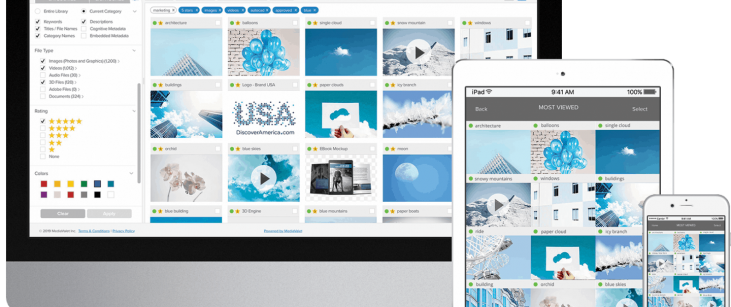


As the boom in ecommerce continues and becomes increasingly more competitive, it is no longer enough just to add your products to your website with a “buy now” button. Instead, it’s about creating a positive and consistent digital experience for customers. By showcasing high-resolution visuals, along with accurate product descriptions, details, and more, companies can increase customer confidence in purchasing their products online. With this in mind, while PIM is a great starting point for organizations, those that want to double down on their approach to visual media need a more robust solution for managing their assets.
Searching for the right technology can be challenging since there are so many options to choose from, but luckily we already know of the perfect solution: digital asset management (DAM). How can a DAM help your organization with its ecommerce success? Let’s take a closer look at exactly what DAM has to offer and why it is important in today’s world.
Where does Digital Asset Management fit into ecommerce
High-quality product images and engaging content are integral for retailers to build brand trust and drive purchase-ready behavior. But, as product lines and distribution channels expand, it can become challenging to manage product-related content effectively. A cloud-based digital asset management solution enables retailers to better manage their product and brand material, and distribute it across all customer touchpoints, such as ecommerce, social media, store locations, and more, reducing time-to-market and powering omnichannel strategies.
Here are some specific tasks made easier with a DAM:
- Organizing: Store all your assets in one central location.
- Searching: Find your digital assets faster with artificial intelligence and advanced search capabilities.
- Downloading: Access and download assets in the exact file format and resolution you need.
- Version Control: Save and track various asset versions and revert to an earlier asset at any time.
- Sharing: Easily share your large files in a variety of ways.
- Access Control: Ensure that your assets are only used by the right people at the right time.
Learn more about the key features that a DAM has to offer here.
Why Digital Asset Management is Important in ecommerce Today
The last two years, for marketers in particular, was a period where they were challenged to shift their mindset and experimented with new budgets, new channels, and new initiatives. Even now, we are still seeing the impact of these changes—particularly within the ecommerce space.
As we enter 2022, there are three trends that are driving the need for DAM:
1) Reprioritization of Digital
As teams were forced to experiment with digital channels over the last few years, they were pleasantly surprised with the ROI they achieved. Entering into 2022, many marketing leaders are reprioritizing their spend commitments to pure-play digital channels, saying goodbye to traditional.
2) Distributed Teams
As a result of many teams working remotely from home, leading organizations are reevaluating their existing processes and technology to ensure everyone on their team is supported, no matter where or when they’re working. It’s no longer a guarantee that everyone will work within the same four walls.
3) Less Resources
As we near the end of 2021, the latest Gartner research has shown that marketing teams will continue operating within their newfound budget for well into the foreseeable future. As a result, marketing leaders need to reevaluate how to achieve results with fewer people, capital, and resources.
Marketing teams are investing more than ever in digital media but, with a reduced budget, it’s critical for them to ensure that each of their assets are used to their full potential – and kept safe, yet accessible for those that need them. With that being said, a digital asset management system has proven to be an ideal solution for centralizing high-value media into a secure cloud-based library and has quickly become a crucial part of many organizations’ eCommerce success.
Learn more about why DAM is important today.
Integrating PIM & DAM
Now that we understand the benefits of a DAM in today’s world, you may still be wondering: if I already have a PIM, do I still need a DAM? The answer is YES!
While a PIM is designed to manage products and product information, a DAM is designed to store and manage digital assets.
How, then, do they work together and what are the benefits of integrating the two? A PIM and DAM integration:
- Ensures product details and digital assets are always up-to-date,
- Automatically links product descriptions with images,
- Ensures an efficient process to align all product page elements with multiple channels,
- Ensures all users can access all the resources they need, and
- Streamlines brand consistency.
A fully integrated solution helps organizations bridge the gap between product data and rich media by creating automatic sync between PIM and DAM. This helps to eliminate content silos in your organization, plus optimizes the discoverability of assets for your team by offering a single-source-of-truth that everyone can access.
Don’t Wait to Integrate MediaValet and Akeneo
MediaValet digital asset management can be fully integrated with StrikeTru partner, Akeneo PIM. Integrating Akeneo and MediaValet can help you scale your eCommerce strategy, quickly and consistently delivering product and branded content across all marketing channels.
To learn more about DAM and PIM integrations and how they can boost your online revenue, book a demo with our team today.







